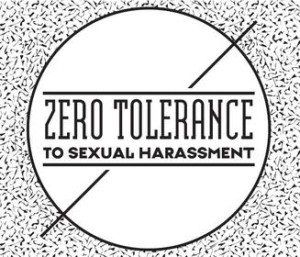Higher Damages Awarded Recently for Victims of Sexual Harassment
April 20, 2017 - 6 minutes read All employers in Australia are responsible for maintaining health and safety in their workplaces. This includes having procedures in place to reduce the risk of harassment (including sexual harassment), bullying and discrimination.
All employers in Australia are responsible for maintaining health and safety in their workplaces. This includes having procedures in place to reduce the risk of harassment (including sexual harassment), bullying and discrimination.
Australia’s Sex Discrimination Act prohibits sexual harassment not only by employers and fellow workers, but also by others associated with the organisation – such as agents, partners, contractors, and / or volunteers. Where incidents of sexual harassment do occur, it is the employer that is usually held liable.
In recent years, a number of cases have arisen in which the amount of compensation awarded to victims has been higher than it was in the past, possibly setting a precedent for future cases. We will outline some of these cases below.
What is sexual harassment?
Sexual harassment is described by the Human Rights Commission as “unwelcome sexual conduct that a reasonable person would anticipate would offend, humiliate or intimidate”. Examples include repeated and unwanted requests for sexual favours, indecent exposure, sexual taunts and / or insults, sexually explicit emails, display of posters or screen-savers of a sexual nature, and suggestive comments or jokes. It’s important to note that it does not refer to interaction or even flirtation that is consensual and / or mutual.
Sexual harassment also predominantly affects women, and can play a role in interfering with their ability to undertake paid employment – potentially undermining workplace equality.
The FairWork Commission says that sexual harassment is one of the most common types of complaints received under the Sex Discrimination Act.
Impact on organisations
Sexual harassment in an organisation can reduce workplace safety and seriously affect morale and work performance. It can also contribute to higher absenteeism and turnover – adding to organisational costs.
In severe cases, sexual harassment could possibly even bring down an organisation! Moore’s Legal refers to several recent decisions of higher compensation to victims, that could set a precedent for future cases. These include:
- $100,000 compensation awarded by the Full Federal Court in 2014 to a claimant, following an appeal of a decision to initially award $18,000.
- Compensation of more than $332,000 plus legal costs in 2015 awarded to an employee suffering PTSD and depression, as a result of harassment by a workplace manager over a 4 month period in 2013.
- $1.3 million awarded to a claimant in 2015 for repeated serious harassment over an 18 month period. The compensation included nearly $700,000 for loss of future earnings.
- Award of $300,000 in 2017 for the victim of a one-off act of sexual harassment that occurred in 2010.
In these cases, it was the employer that was held to be ‘vicariously liable’ for the incidents of harassment under their watch. This makes it vital for employers to put procedures in place to reduce the risk and to provide a safe workplace where workers are protected from harassment and bullying.
Being proactive – here’s what you can do
- Policy – develop and implement a policy on harassment, bullying and discrimination. This should include zero tolerance for sexual harassment, as well as outline the consequences and explain how to report incidents.
- Internal procedures – develop procedures for responding to and / or investigating complaints.
- Training – conduct training sessions for new staff and ongoing refreshers. These sessions should cover what sexual harassment is, how to identify it in the workplace, and how to report it. According to the Human Rights Commission surveys show that many people are not aware of what sexual discrimination actually consists of.
- Response – all complaints should be taken seriously and not dismissed or ‘normalised’ in any way. If a case of sexual harassment is suspected employees will need to consider what steps to take next – such as conciliation, further investigation, and / or legal advice.
- Insurance – employers should ensure they have adequate insurance cover for potential sexual harassment claims.
With regard to insurance cover through Churches of Christ Insurance (CCI), it’s important to be aware of the ‘Known Offenders Sexual Abuse’ exclusion. This essentially means that CCI will not cover a claim where the perpetrator was a known offender – see page 9 of the CCI Summary of Insurance for more details.
To discuss your insurance cover, get in contact with the CCI office. Alternately you can use our online form here to obtain a church insurance quote.
For more information on this topic see the following:
CCI article:
Preventing Discrimination, Bullying and Harassment in Your Organisation
Moores Legal:
How a sexual harassment claim could bring down your organisation
Australian Human Rights Commission:
Information on sex discrimination at work
FairWork Ombudsman:
Written by Tess Oliver
Tags: employees, health & safety, legal, volunteers
Recent Comments